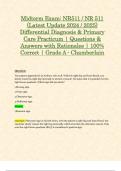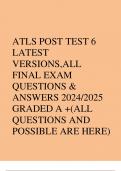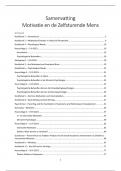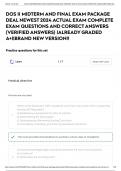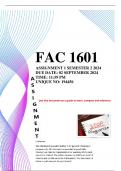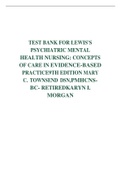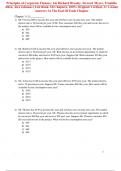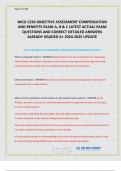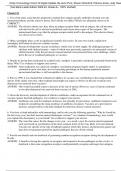Tentamen (uitwerkingen)
Midterm Exam: NR511 / NR 511 (Latest Update 2024 / 2025) Differential Diagnosis & Primary Care Practicum | Questions & Answers with Rationales | 100% Correct | Grade A - Chamberlain
- Vak
- NR 511 (NR511)
- Instelling
- Chamberlain College Of Nursing
Midterm Exam: NR511 / NR 511 (Latest Update 2024 / 2025) Differential Diagnosis & Primary Care Practicum | Questions & Answers with Rationales | 100% Correct | Grade A - Chamberlain Question: You suspect appendicitis in Andrew, who is 18. With his right hip and knee flexed, you slowly rotat...
[Meer zien]
